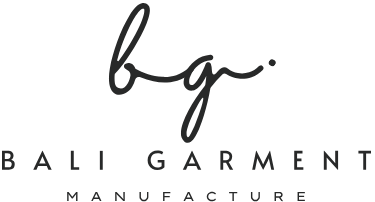The fashion industry has long been celebrated for its creativity, innovation, and ability to shape culture. Yet, behind the glamour of runways and glossy campaigns, there has been a darker side—an industry historically tied to overproduction, environmental damage, and exploitative labor. In recent years, however, the tide has started to turn. Today, sustainability is no longer an optional add-on for forward-thinking brands; it has become an essential part of how modern fashion is defined.
Consumers are more informed than ever before. They ask questions about where their clothes are made, what materials are used, and whether the workers behind them are treated fairly. Governments and global organizations are also pushing for stronger environmental standards. The result is a transformative shift within fashion manufacturing, one that prioritizes eco-conscious practices, ethical responsibility, and long-term innovation. This sustainable revolution is not just about adapting to trends—it’s about rewriting the very DNA of fashion.
Eco-Friendly Fabrics: Redefining the Basics
The first step toward sustainable manufacturing often begins with fabric choice. Traditional textiles like conventional cotton and polyester have significant environmental costs, from pesticide-heavy farming to petroleum-based production. By contrast, eco-friendly fabrics such as organic cotton, hemp, Tencel (made from sustainably sourced wood pulp), and recycled polyester offer alternatives that dramatically reduce harm.
Organic cotton, for example, is cultivated without harmful pesticides and requires significantly less water. Tencel is produced in closed-loop systems where water and solvents are recycled. Recycled polyester gives a second life to discarded plastics, turning waste into wearable fashion. Beyond reducing impact, these fabrics also provide high-quality, durable, and breathable options that rival traditional textiles.
More importantly, eco-friendly fabrics send a strong message. When brands use them, they signal to consumers that fashion can be both stylish and sustainable. Companies like Stella McCartney and Patagonia have led the way in this arena, but many smaller labels are also carving out space by making fabric innovation a core part of their identity.
Ethical Production: Putting People First
Sustainability is not just about the planet—it’s also about people. Ethical production has become a cornerstone of responsible fashion, ensuring that the hands behind every garment are treated with dignity. Historically, fashion supply chains have been criticized for unsafe conditions, low wages, and lack of transparency. The tragic Rana Plaza collapse in 2013 exposed these issues to the world and sparked a wave of demand for change.
Today, many manufacturers are shifting toward practices that prioritize fair wages, safe working environments, and transparency from raw material to final product. Ethical certification programs and audits provide accountability, but it is the brands themselves that must commit to long-term improvement.
When companies invest in their workers, the impact is far-reaching. Workers benefit from better livelihoods, communities thrive, and consumers build deeper trust with brands. Ethical production also enhances brand reputation, as shoppers increasingly favor businesses that align with their personal values. The result is a stronger, more resilient industry rooted in respect for human rights.
Circular Fashion: Closing the Loop
Perhaps one of the most exciting developments in recent years is the rise of circular fashion. Unlike the traditional “take, make, waste” model, circular fashion focuses on designing garments with their full life cycle in mind. This includes recycling, upcycling, and creating take-back programs where consumers can return used clothing for repurposing.
For example, some brands now collect old garments in-store, giving customers the option to recycle instead of discard. Others experiment with innovative upcycling, transforming leftover fabrics into new, one-of-a-kind pieces. By embracing circularity, manufacturers not only reduce landfill waste but also create opportunities for creativity and innovation.
Circular fashion challenges us to rethink ownership as well. Rental services, clothing swaps, and resale platforms are gaining momentum, providing consumers with more ways to engage with fashion sustainably. This shift shows that the future of fashion may not be about buying more but about maximizing the value of what we already have.
Cutting Carbon: Innovation in Manufacturing
Another critical area of transformation lies in reducing carbon emissions. The fashion industry contributes significantly to global greenhouse gases, but manufacturers are increasingly adopting eco-friendly processes to minimize this impact. Energy-efficient factories, renewable energy sources like solar and wind, and water-saving dyeing methods are just some of the innovations reshaping production.
Low-impact dyeing, for instance, reduces both water usage and chemical runoff, addressing one of the industry’s most polluting stages. Similarly, digital printing technologies cut fabric waste while still enabling bold and vibrant designs. By integrating these innovations, brands can slash their carbon footprints without compromising on style or scalability.
These efforts not only help the environment but also make good business sense. Energy savings reduce operational costs, while sustainable branding attracts eco-conscious consumers. The ripple effect is clear: when one brand succeeds in lowering its carbon footprint, it sets a precedent that inspires the entire industry.
Transparency and Accountability: Building Trust
For many consumers, trust has become the deciding factor in purchase decisions. Today, shoppers don’t just buy clothing—they buy the story behind it. This makes transparency and accountability essential for fashion brands. From disclosing sourcing practices to publishing sustainability reports, brands are finding that openness builds stronger relationships with customers.
Certifications such as GOTS (Global Organic Textile Standard), OEKO-TEX, and Fair Trade serve as important benchmarks, giving consumers the confidence that their purchases align with ethical and environmental values. But beyond certifications, transparency is also about honesty. Brands that admit where they still fall short—and share their goals for improvement—often gain more respect than those that remain silent.
By inviting consumers into the journey, brands transform sustainability into a shared mission rather than a corporate checklist. This sense of inclusion strengthens customer loyalty and creates advocates who spread the message further.
Collaboration: The Future of Sustainable Fashion
No single brand can solve fashion’s environmental and ethical challenges alone. Collaboration has therefore become a key ingredient in driving sustainable progress. Partnerships between fashion companies, NGOs, technology providers, and even other industries are fostering innovative solutions at scale.
For instance, cross-industry partnerships are helping develop new biodegradable materials, while NGOs work with brands to improve labor conditions in developing countries. By pooling resources and expertise, these collaborations accelerate change and ensure that sustainability is not siloed but shared across the entire ecosystem.
This collective approach demonstrates that sustainability in fashion is not about competition but about unity. When brands come together to face common challenges, the industry becomes stronger, more innovative, and more impactful on a global level.
The sustainable revolution in fashion manufacturing is more than a passing movement—it is a new standard redefining how clothes are made, worn, and valued. By embracing eco-friendly fabrics, ensuring ethical production, adopting circular practices, reducing carbon emissions, and championing transparency, the industry is laying the foundation for a future where fashion uplifts both people and the planet.
Collaboration ensures that progress is not isolated but widespread, creating an industry-wide shift toward responsibility and resilience. For consumers, this means every purchase has the power to contribute to a larger story—one of innovation, accountability, and respect for the world we share.
The transformation is far from complete, but the momentum is undeniable. With each step forward, fashion is proving that style and sustainability are not opposites—they are partners in shaping a future that is beautiful, ethical, and lasting.



